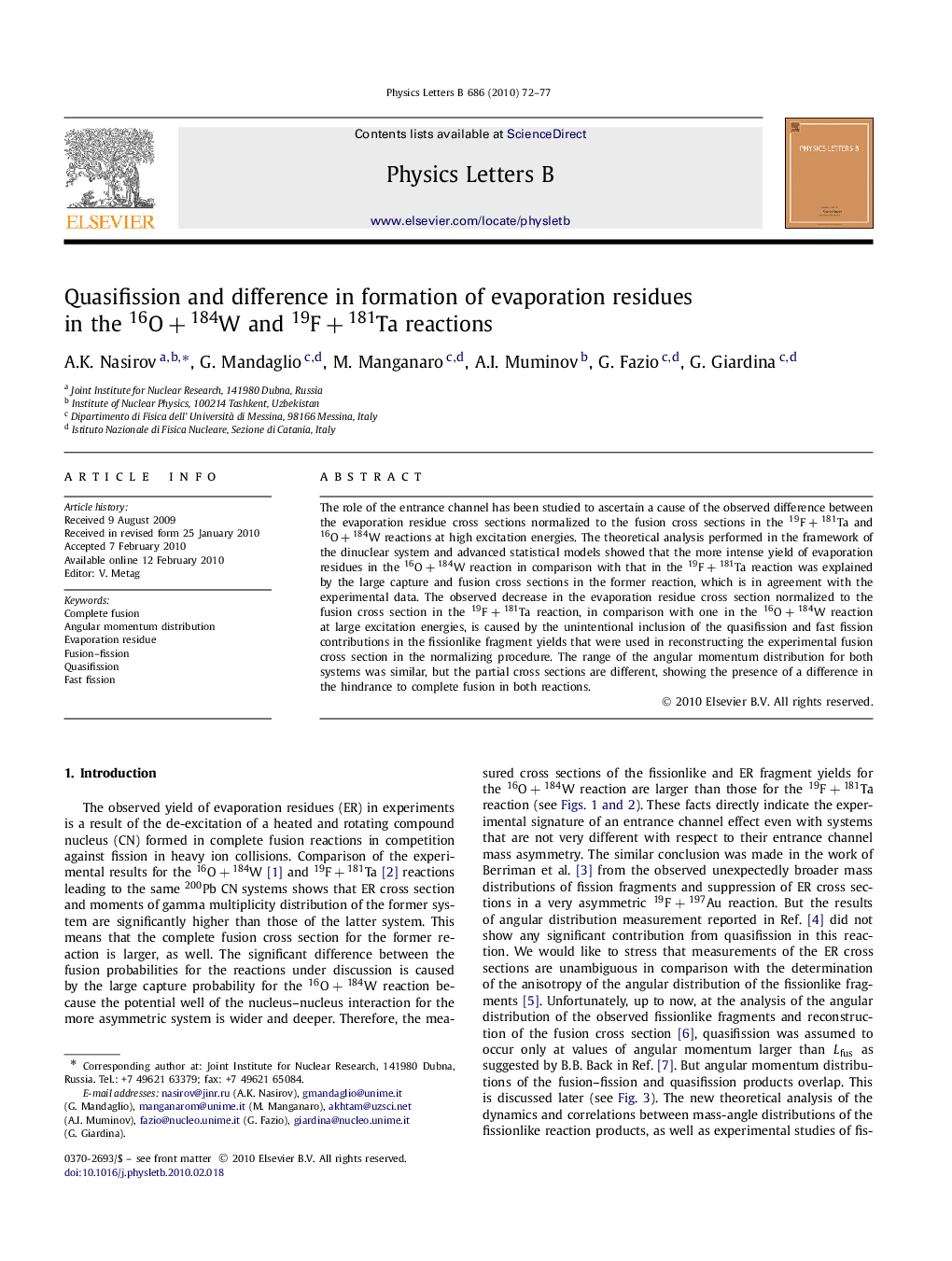| Article ID | Journal | Published Year | Pages | File Type |
|---|---|---|---|---|
| 10723494 | Physics Letters B | 2010 | 6 Pages |
Abstract
The role of the entrance channel has been studied to ascertain a cause of the observed difference between the evaporation residue cross sections normalized to the fusion cross sections in the 19FÂ +Â 181Ta and 16OÂ +Â 184W reactions at high excitation energies. The theoretical analysis performed in the framework of the dinuclear system and advanced statistical models showed that the more intense yield of evaporation residues in the 16OÂ +Â 184W reaction in comparison with that in the 19FÂ +Â 181Ta reaction was explained by the large capture and fusion cross sections in the former reaction, which is in agreement with the experimental data. The observed decrease in the evaporation residue cross section normalized to the fusion cross section in the 19FÂ +Â 181Ta reaction, in comparison with one in the 16OÂ +Â 184W reaction at large excitation energies, is caused by the unintentional inclusion of the quasifission and fast fission contributions in the fissionlike fragment yields that were used in reconstructing the experimental fusion cross section in the normalizing procedure. The range of the angular momentum distribution for both systems was similar, but the partial cross sections are different, showing the presence of a difference in the hindrance to complete fusion in both reactions.
Related Topics
Physical Sciences and Engineering
Physics and Astronomy
Nuclear and High Energy Physics
Authors
A.K. Nasirov, G. Mandaglio, M. Manganaro, A.I. Muminov, G. Fazio, G. Giardina,
